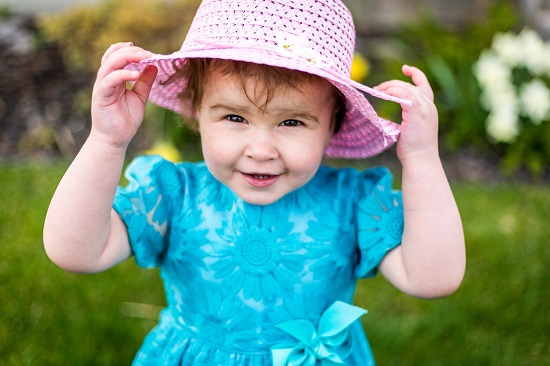You guys, the days are getting LONGER! Are you not beyond excited over this?
Maybe you’re like me and turn into a cute, little bear and hibernate all winter long. As in, I am ready to stuff my face with pasta and go to bed at 5pm. Which is difficult since my children roam the halls til 8. Y’all, someone’s gotta keep ’em from drawing on the walls and forcing the dog to wear a tutu.
Daylight savings is gonna help this momma out immensely. I’m not one of the 5% who suffer from Seasonal Affective Disorder. But give me some spring flowers and sunlight til 9, and I am dancing in the streets.
For your convenience, I’ve included affiliate links. Read my Disclaimer to learn more.
The dark side to this spring-forward business is that everyone in the house has to wake up SUPER EARLY! Which means everyone in the house has to go to bed super earlier.
I have a couple of those early-rising children, so the shift to daylight savings isn’t a big deal for them – they are already up at 6am. And since 6am now is the new 7am when daylight savings kicks in, no biggie.
But what if your kiddo likes to sleep til 7? And refuses to go to bed til 9? Daylight savings is going to kill her. Especially if you have to rally and get everyone out of the house at a decent hour. Letting her sleep til the new 8am is going to seriously crimp your morning routine.
Back to my point: The secret to rocking daylight savings this spring is to shift her bedtime EARLIER. Like when it’s still light out.
I know what you’re thinking: How is that possible with the sun streaming through the windows?!
You gotta PLAN AHEAD.
Dealing with daylight – at bedtime
Your little darling may be convinced no one can sleep if the sun is still up. She is wrong. It’s your job to be the parent and convince her of this. I don’t care how you do it: black out curtains, lies, a princess unicorn eye mask, lavendar-soaked pajamas, a robot that sings lullabies. Here’s a list from the National Sleep Foundation of (legit) ideas, like limiting screen time, to help you accomplish this.
Plus, there’s this from The New York Times:
And since bedtime resistance and difficulty falling asleep are the primary sleep problems in this age group,…it’s worth thinking about how this sensitivity to light may affect children’s behavior, even while further research is being done. Children whose melatonin response has been dampened may look “tired and wired,” Dr. LeBourgeois said. “They are tired, but the clock is not sending the signals to the pineal in a way that would facilitate sleep.”
Many toddlers and preschoolers, for example, do what Dr. LeBourgeois calls “curtain calls,” popping back up again with new requests. That means they’re in and out of the bedroom, and if possible, wherever they are, the light should be dim.
So an hour before bedtime, parents might consider trying for a little of that cavelike atmosphere. Turn off bright overhead lights, use your dimmer switches and try to find an alternative to using the bright lights in the bathroom. “Dimming the light allows melatonin to rise in its natural pattern,” Dr. Akacem said.
Shifting bedtime
Here’s the deal: push bedtime forward slightly, like, in increments of 15 minutes, starting the Monday before daylight savings arrives.
This schedule works in our house:
Monday – bedtime is 8:30pm –> push it earlier to 8:15pm
Tuesday – bedtime is now 8:15pm
Wednesday – push bedtime earlier to 8pm
Thursday – bedtime is now 8pm
Friday – push bedtime earlier to 7:45pm
Saturday – bedtime is now 7:45pm
Sunday – bedtime is now technically 7:45pm and you can push it earlier to 7:30pm if you want
To succeed, you might need to move meals and naps up a bit, too, each day.
By Sunday, you’ve ROCKED daylight savings.
The goal in all this is that by Monday, after daylight savings arrives, when everyone goes back to life with school and daycare and work, your little darling’s body will have adjusted a bit better than the kids at school whose parents just said, “Dang, looks like we’re kicking you out of bed way early on Monday morning! I’m sure your day will be awesome on an hour less of sleep!”
The impact of less sleep
You think losing an hour of sleep is no big deal?
John Medina, in his fascinating book, Brain Rules: 12 principles for surviving and thriving at work, home, and school, talks about the important link between learning and sleep:
“Simply disrupt the night’s sleep at specific stages…and you eliminate any overnight learning improvement. It won’t surprise you, then, that a lack of sleep hurts learning. In fact, a highly successful student can be set up for a precipitous academic fall, just by adjusting the number of hours she sleeps.”
When your kid needs 10 hours of sleep, your kid needs 10 hours of sleep. So do her a favor and help her adjust to daylight savings. Her brain will be well rested to keep earning all those A’s at school. Plus, it’ll keep her from turning into a grouchy, little jerk.
And here’s the BEST reason to get your little one in bed earlier: you can enjoy a romantic, kid-free, pasta dinner with your spouse. Instead of chasing baby girl around the house and cleaning marker off the wall. (Who am I kidding? You’ll probably still have to clean marker off the wall.)
REMEMBER: all it takes is 15 minutes a night, starting a few days prior, to do your little one good.
What are your tips for daylight savings this spring? Share them below or on Facebook at MothersRest.
Photo credit: Travis Grossen on Unsplash.com


You make this sound so easy! But it always sneaks up on us every year… despite our good intentions changing the routine gradually, it’s so hard to actually change it, even by 15 minutes, when you have a good flow and regular system going… So usually we end up dealing with it after the fact and yes being miserable for several days after. I think there is a stat that the Monday after Spring Daylight savings every year has the most car accidents in the United States. Blame all of us parents who can’t get our act together!
Everyone work from home on Monday! 🙂